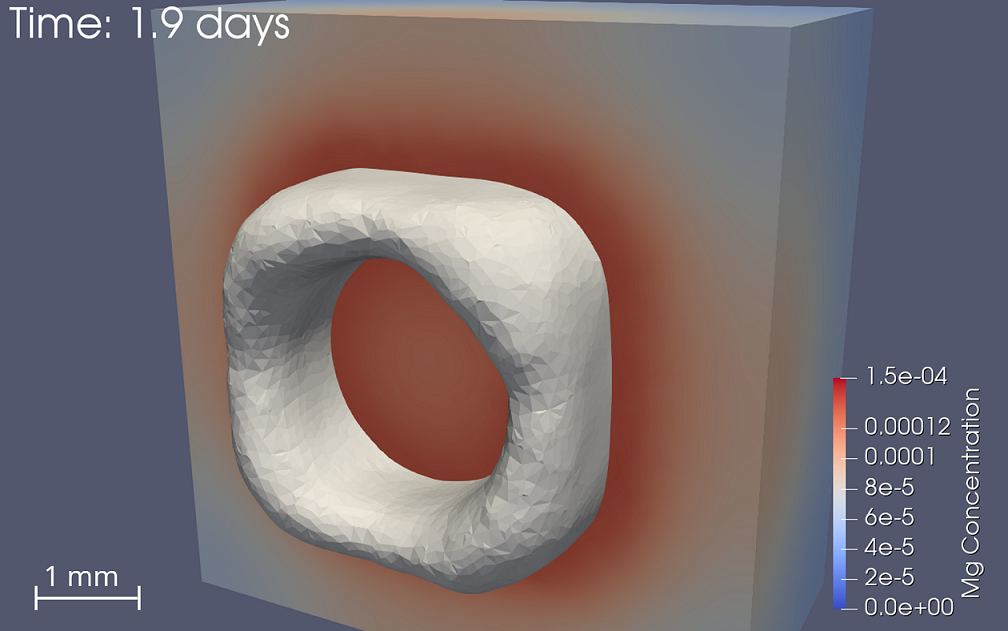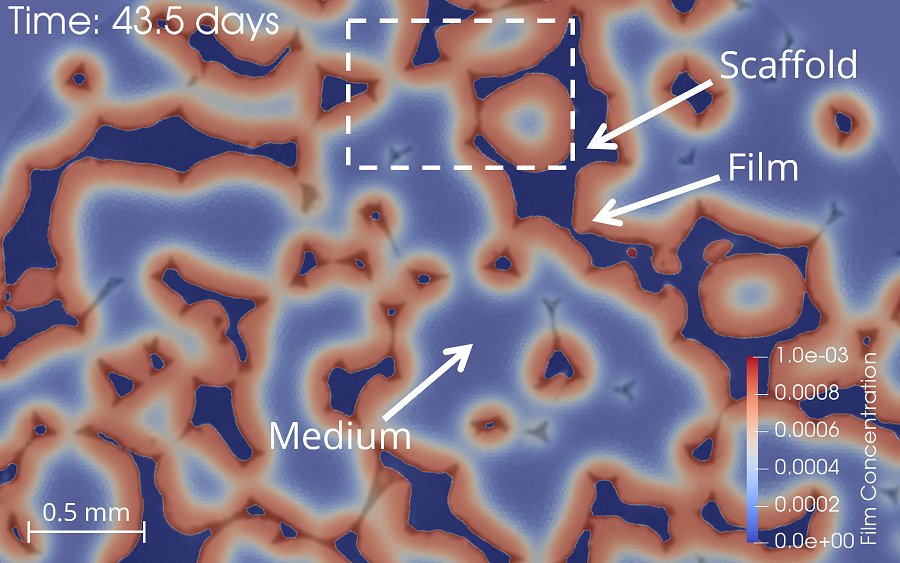


Biodegradable implants
The rate and quality of bone healing depend greatly on achieved mechanical stability. Nails, pins, and plates are often used to stabilize the fraction. One of the major disadvantages of these fixation devices is a need for a second surgery to remove the implant. As a result, much attention is currently paid towards the development of biodegradable materials in orthopedic applications to resolve this issue.
Currently in this project: Mojtaba, Pieter
– Mojtaba
In this project, we will develop a quantitative mathematical model based on the chemical reactions occurring during the degradation process in order to preliminarily assess the degradation of the implants prior to conducting any in-vitro or in-vivo experiments. The models will be simulated in 3D space, and then the developed codes will be linked with structure optimization models to obtain more accurate predictions of the implant behavior over time.
We started with Mg but will create separate models for Ti, Fe, and Zn as well. Mg and its alloys have a potential to be used as a material in production of biodegradable implants because not only do they have mechanical properties close to those of a natural bone (which minimizes the “stress-shielding” effect), but also Mg is one of the most abundant elements present in human blood, and it has been reported that the release of Mg ions by the Mg-based implants can stimulate the development of a hard callous at fracture sites.
